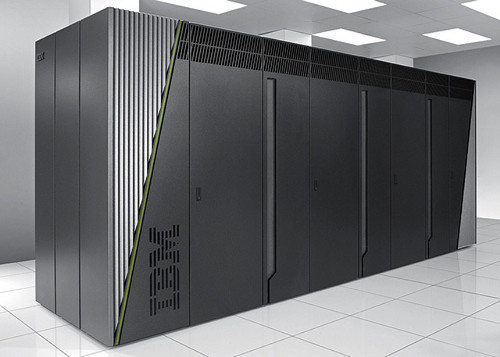A computer built by IBM for the National Nuclear Security Administration (NNSA) has become the world's fastest supercomputer, according to the Top 500 Supercomputer list. Managing 16.32 sustained petaflops (quadrillion floating-point operations per second), Sequoia blows Fujitsu's 10.51 petaflop K computer — the previous champ — out of the water.

The Sequoia is based on Blue Gene / Q architecture, which can theoretically scale to provide 100 petaflops worth of processing power. The NNSA's Sequoia consists of 98,304 compute nodes, into which IBM has packed 1.6 million cores with 1.6 petabytes of RAM (1 GB per core). The system sits across 96 racks and is roughly eight times more power efficient than IBM's Blue Gene / L architecture, which held the number one spot during the mid-2000s.
In Germany, IBM has built the SuperMUC supercomputer, which sits fourth on the Top 500 list and claims the title of "Europe's fastest supercomputer". It has a peak output of over three petaflops from more than 150,000 cores. The SuperMUC, unlike most supercomputers, is hot-water cooled, which removes heat 4,000 times more efficiently than air. The system directly cools active system components like processors and memory that can reach temperatures as high as 45 degrees Celsius (113 degrees Fahrenheit).
IBM says that '"three billion people using a pocket calculator would have to perform one million operations per second to reach equivalent SuperMUC performance."
